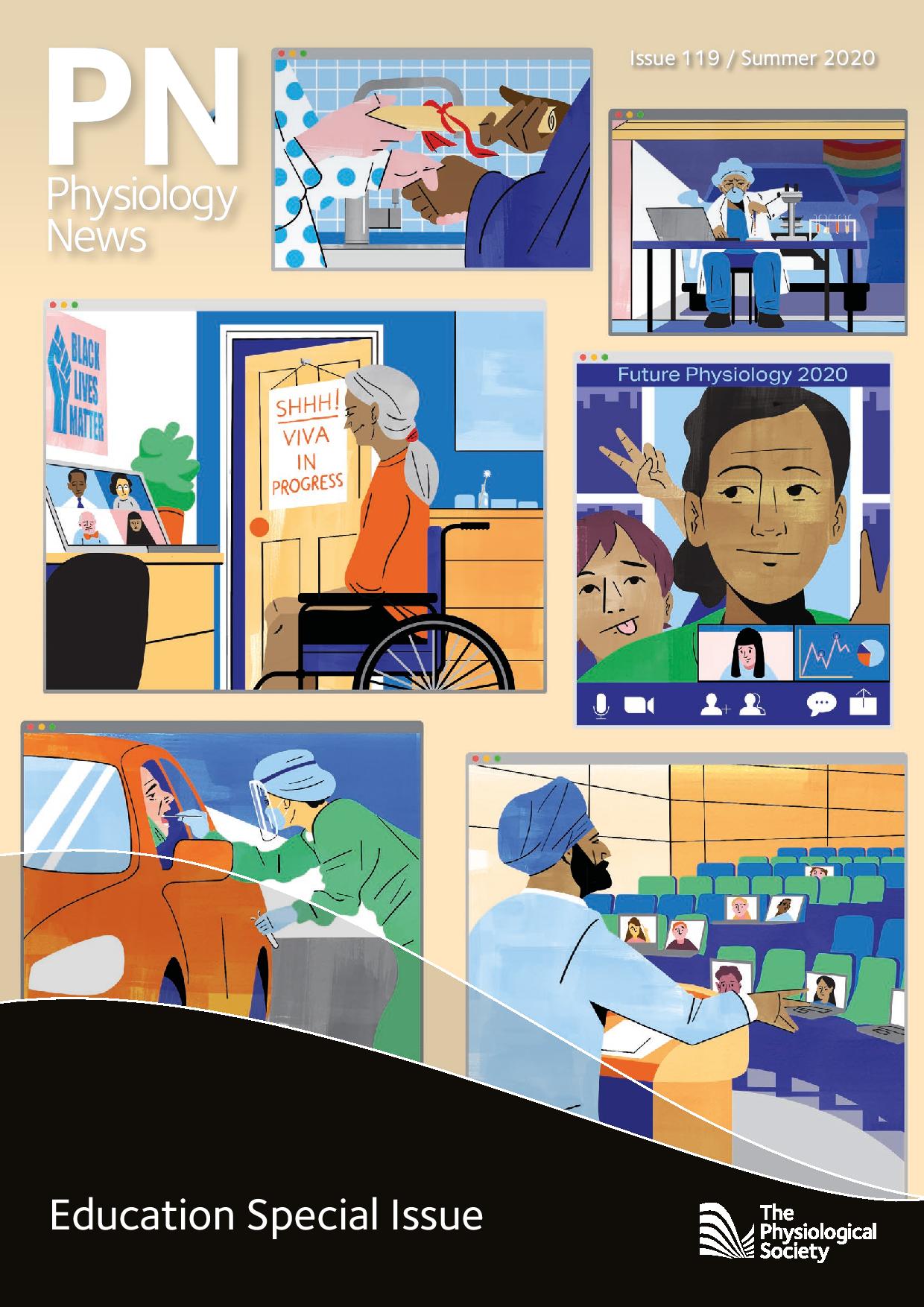
Physiology News Magazine
Mapping the landscape for physiology students and graduates
News and Views
Mapping the landscape for physiology students and graduates
News and Views
Chrissy Stokes, Head of Professional Development and Engagement, The Physiological Society
Sarah Hall, Cardiff University, UK
https://doi.org/10.36866/pn.119.14
The Society has a key role to play in feeding the pipeline of career physiologists. This role has gained in significance as the number of named physiology degrees and physiology departments has waned. However, while the number of students enrolled in named physiology degrees may be declining, undergraduate students do not display a lack of interest in physiology content. In fact, as students develop an understanding and appreciation of the subject, it appears they are more likely to actively seek to continue studying physiology. This is illustrated by the popularity of intercalated degrees in physiology (reported by KCL) and the high proportion of students choosing advanced physiology modules following a common-core first year (reported by Cardiff University).
In line with the development of the new Society strategy, in 2019 we held a focus group meeting with 16-21 year-old school pupils and undergraduate students to discuss how The Society might develop useful resources for this target audience. As well as highlighting the desire for more specific information on routes into studying physiology at university, these students were keen to have more information about employment opportunities after graduation with a physiology degree.
Advised by the then Education and Outreach Committee, a Task and Finish Group (TAFG) was assembled in early 2019 to advise on the design and implementation of a project to map the current landscape into and out of studying physiology at universities in the UK and the Republic of Ireland (RoI). Members of the TAFG came from a range of backgrounds in education and industry, with interests in supporting graduates: Sarah Hall, Cardiff University (Chair); Richard Bowater, University of East Anglia; Peter Jones, King’s College London; Frankie MacMillan, University of Bristol; Jacqueline Naylor, AstraZeneca; Vicky Walker, school teacher. The key aims of the project were to capture the entry requirements for physiology and related courses, and to identify the employment destinations of graduates in physiology and related subjects. This information would then be made available to Members, as well as to undergraduates considering employment opportunities and those promoting physiology as a study option at their institution. The intended impact would be to support undergraduate study of physiology and highlight career pathways for physiology graduates.
In consultation with Society Representatives from institutions across the UK and RoI, the TAFG identified 30 entry degree courses* that had at least one third physiology content; these included Sport and Exercise Science and Biology, as well as Physiology and Neuroscience. Almost half of the Society Reps reported that their degrees contained at least 50% physiology content; however, it was noted that the total amount of physiology in a degree often depends on the modules selected. 29% of Society Reps also reported that their institution offers a physiology-named course that students can switch to mid-degree or as an exit degree. The timing and requirements for such a switch also vary widely between institutions, with some restricting movement to the 1st year while others permit movement up until the end of the 3rd year.
The information from Society Reps was used to identify appropriate UCAS and CAO codes for further investigation across all institutions in the UK and RoI, respectively. Physiology is also taught as part of a number of clinical and healthcare degrees but these were not included in the study.
The group then commissioned work from the labour market analytics firm Emsi to gain a deeper insight into UK and RoI routes in physiology: both entry requirements for degree programmes and employment destinations after graduation. There is notable variation in entry requirements for physiology-related degrees across the UK, from 72 UCAS points or BC at A-level for a Sports and Exercise Science degree to 144 UCAS points or AAA at A-level for Neuroscience. The median entry tariff for named Physiology degrees was 128 UCAS points (ABB at A-level). In the RoI there is also a huge variation in requirements, from 230 to 566 CAO Points across SES and physiology/biomedical science courses (SES courses tend to have lower requirements than for physiology/biomedical degrees.
For the purposes of gaining focussed, meaningful information on graduate destinations, the study was narrowed to 5 degree codes, and students graduating in 2009 and 2010. Reviewing data from CVs posted by almost 2500 graduates in this cohort revealed their job profile over the first decade of their careers. These data show that the largest single occupation for all physiology graduates (including Sports and Exercise Sciences, SES) is as biological scientists and biochemists, confirming that graduates commonly remain in physiology-related work. Non-research career destinations include teaching, management (sales, accounts and business) and clinical/allied healthcare practice. Reviewing first, second and third career destinations of this cohort demonstrated opportunities for movement between employment categories.
The Task and Finish Group has now reported to the Education, Public Engagement and Policy Committee and more detailed outcomes from this study will be made available online in 2020. We also aim to build on this initial work, to inform future development of the Society’s careers resources.
Chrissy Stokes is Head of Professional Development and Engagement at The Physiological Society.
Sarah Hall a Reader in Physiology at Cardiff University, with a focus on Teaching and Scholarship. She is Deputy Director of Undergraduate Education in the School of Biosciences and Programme Leader for the Physiology degree. At The Society, she is currently a Trustee and Chair of our Education, Public Engagement and Policy committee.
